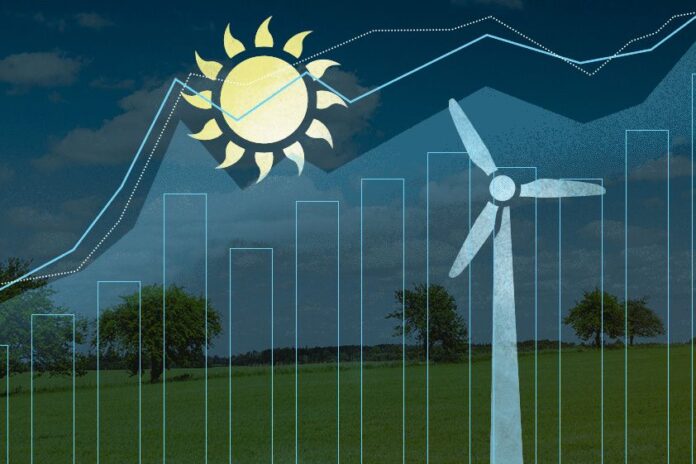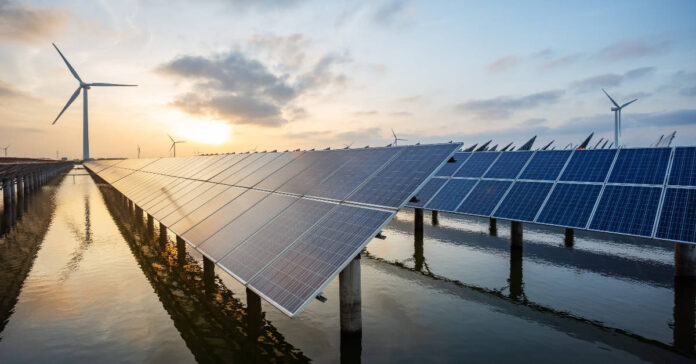The growing interest in renewable energy reflects a global shift towards more sustainable and eco-friendly practices. As industries and governments alike pivot towards greener solutions, renewable energy sources such as solar, wind, and hydro power are becoming increasingly popular.
However, companies looking to invest in this sector face a myriad of risks. From financial uncertainty and evolving technology to regulatory changes and resource variability, the path to integrating renewable energy is complex. Understanding these risks is crucial for businesses aiming to make informed decisions in this dynamic and rapidly evolving sector.
Rising Energy Demand

The global demand for energy is escalating, driven by expanding populations, economic growth, and industrial development. This surge places immense pressure on companies to seek out sustainable solutions that can meet these growing needs. Renewable energy, with its promise of a limitless and clean fuel supply, appears as an attractive option.
However, the transition from traditional energy sources to sustainable ones is not straightforward. Companies must grapple with the challenges of aligning their general strategies with emerging technologies, fluctuating market demands, and the need for substantial upfront investments. This complex landscape requires careful navigation to ensure long-term viability and success.
The Appeal of Renewable Energy
Renewable energy’s allure for businesses lies in its potential for environmental stewardship and cost savings over time. Utilizing renewable sources like solar, wind, and bioenergy can significantly reduce a company’s carbon footprint, aligning with global efforts to combat climate change. Additionally, as sustainable technology advances, the prospect of lower operational costs becomes more achievable.
However, these benefits come with their own set of challenges. The initial investment in renewable technology can be substantial, and the unpredictability of renewable power sources can pose operational challenges. Businesses must weigh these factors carefully to capitalize on its long-term benefits.
Financial Risks

The financial risks associated with renewable energy projects are a major concern for companies. The high initial capital required for setting up renewable infrastructure, such as solar panels or wind turbines, can strain a company’s finances. Additionally, the return on investment is often uncertain, with fluctuating prices and evolving market dynamics.
These financial uncertainties are compounded by the potential for technological obsolescence, as rapid advancements in sustainable technologies can render existing systems outdated. Companies must therefore engage in thorough financial planning and risk assessment to ensure the sustainability of their renewable energy investments.
Technology Risks
Renewable energy is a field characterized by rapid technological advancements. For companies, this means a constant race to keep up with the latest innovations and updates. Investing in renewable technology involves the risk of the technology becoming obsolete or less efficient compared to newer alternatives.
This necessitates a continuous investment in research and development, which can be financially and operationally demanding. Moreover, integrating new technologies into existing infrastructures often presents technical challenges and requires specialized expertise. Companies need to maintain a flexible and adaptive approach to technology to navigate these risks effectively.
Regulatory Uncertainty

The renewable energy sector is heavily influenced by government policies, which can vary widely between regions and over time. Changes in regulations, subsidies, and incentives can have a profound impact on the viability of sustainable projects.
Companies face the risk of policy shifts that could alter the economic landscape, potentially rendering their investments less profitable or even obsolete. This regulatory uncertainty requires businesses to stay informed and agile, ready to adapt their strategies in response to changing government policies and market conditions.
Resource Variability
Renewable energy sources like wind and solar rely heavily on weather conditions, which can be unpredictable. This variability poses a risk for companies investing in these technologies, as inconsistent resource availability can lead to fluctuating outputs.
To mitigate this risk, businesses often implement strategies such as diversifying their energy portfolio, investing in energy storage solutions, and employing advanced forecasting techniques. By anticipating and adapting to these natural fluctuations, companies can better manage the challenges of resource variability in the renewable sector.
Market Volatility

The energy market is known for its volatility, significantly impacting companies in the renewable sector. Fluctuations in energy prices can alter the economic viability of renewable projects. Companies must navigate these uncertainties, which can affect both short-term profitability and long-term investment decisions.
To combat market volatility, businesses often hedge their investments, use long-term contracts, and closely monitor market trends. Understanding and adapting to these market dynamics is crucial for companies to maintain stability in the often tumultuous sustainable landscape.
Competition and Market Share
The renewable energy industry is highly competitive, with numerous players vying for market share. This competition can be challenging for companies, especially new entrants. They must innovate and differentiate their offerings to stand out.
Additionally, maintaining market share requires continuous investment in technology and customer engagement strategies. Companies must stay agile, adapt to changing market conditions, and invest in research and development to stay ahead of competitors and retain their market position in this rapidly evolving industry.
Supply Chain Disruptions

Renewable energy projects are not immune to supply chain disruptions, such as material shortages or logistical challenges. These disruptions can delay project timelines and increase costs, impacting a company’s return on investment.
To mitigate these risks, companies often diversify their supply sources and develop strong relationships with multiple suppliers. They may also invest in local supply chains to reduce dependency on global markets. A resilient supply chain is crucial for ensuring the smooth operation and profitability of sustainable energy projects.
Public Perception
Public opinion plays a significant role in the success of renewable energy initiatives. Companies must be mindful of the reputational risks associated with their projects. Negative public perception, often fueled by misinformation or environmental concerns, can hinder project approval and market acceptance.
To address this, companies invest in community engagement, transparent communication, and educational campaigns. Building a positive public image is essential for gaining support, facilitating project implementation, and ensuring the long-term success of renewable energy investments.
Conclusion
Investing in renewable energy involves navigating various risks, from resource variability and market volatility to competition and public perception. Companies must approach these challenges wisely, employing strategies to mitigate risks and capitalize on opportunities.
Despite the challenges, the shift towards renewable energy is essential for sustainable development. By understanding and managing the risks, companies can contribute to a greener future while also achieving business success.







